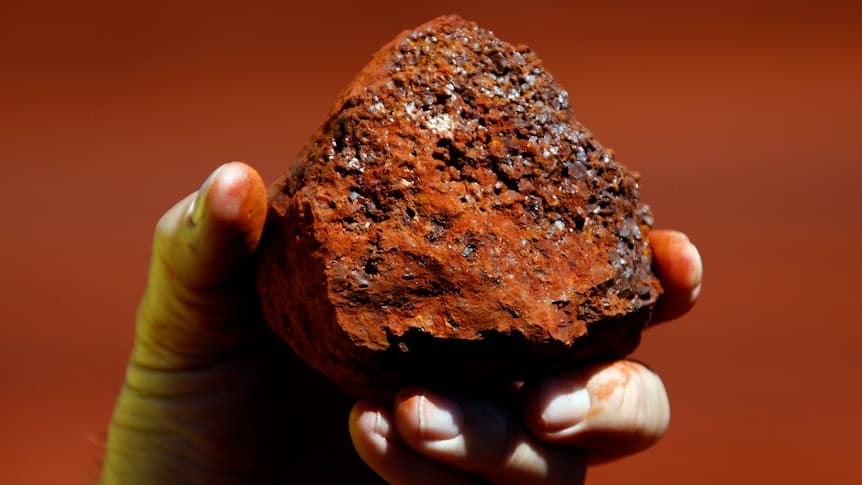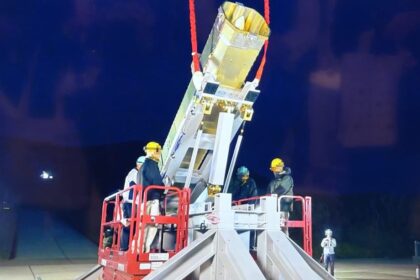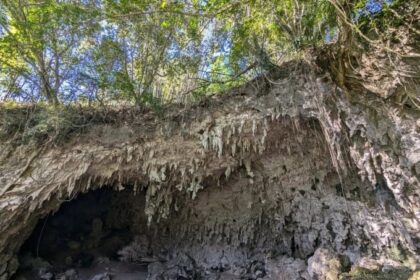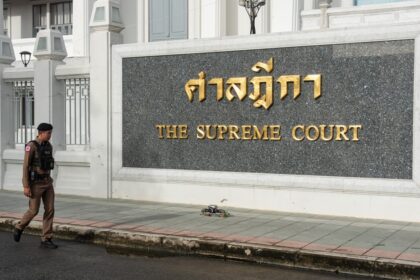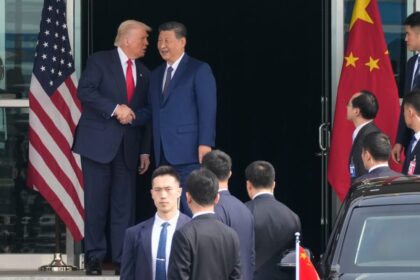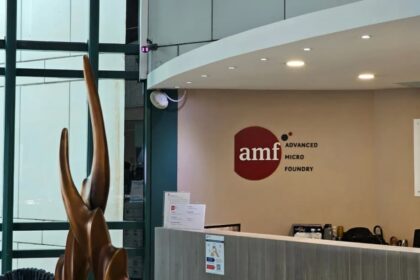How Chinese credit reshaped Australian investment since 2000
Australia has been one of the largest destinations for Chinese state linked credit since the turn of the century, drawing about 130 billion US dollars across more than two decades, equal to roughly 200 billion Australian dollars. New data compiled by research group AidData shows that only the United States and Russia received more. The money reached almost every corner of the economy, from roads and ports to supermarkets and breweries, with the lion’s share flowing into mining, industry and construction. The pattern tracks the rise of China as Australia’s biggest customer and a central buyer of iron ore, coal and, increasingly, critical minerals.
- How Chinese credit reshaped Australian investment since 2000
- What the new data shows
- Where the money went
- Rules tightened, flows slowed
- Security sensitivities and critical minerals
- A complex case study from agriculture
- Clean energy finance takes center stage
- How this fits into China’s wider strategy
- What it means for Australia
- What to Know
The headline number is striking, but the composition matters more. Most of the Chinese credit in Australia came as foreign direct investment lending. That means loans linked to the purchase or building of companies and assets, rather than short term trade finance or portfolio flows. AidData’s analysis indicates that about 77 percent of Chinese official sector lending in Australia took the form of FDI. The surge also mirrored commodity cycles. Lending spiked during the mining boom and jumped in 2008 when the Chinese firm Chinalco pursued a major stake in Rio Tinto.
China’s overseas lending model has evolved. Once seen mainly through the lens of the Belt and Road Initiative in developing countries, Beijing’s state lenders are now directing a large share of credit to advanced economies. Researchers tracked 2.2 trillion US dollars in loans and grants across 200 countries from 2000 to 2023, and found that more than three quarters of current operations support projects in upper middle income and high income countries. In 2023 alone, Chinese official creditors extended about 140 billion US dollars globally, outspending Washington by more than two to one and surpassing the World Bank by nearly 50 billion dollars.
Australia’s position in this global shift reflects both opportunity and tension. Investment has underpinned jobs, tax revenue and export capacity, especially in Western Australia and Queensland. It has also sharpened debates over national security, critical infrastructure and the screening of state linked capital. The flow of Chinese loans tied to mergers and acquisitions has slowed since Canberra expanded investment review powers and widened the net of sensitive sectors in 2022.
What the new data shows
AidData’s Chasing China project estimates that Chinese state lenders supported roughly 1,350 individual deals or activities in Australia from 2000 to 2023. The totals place Australia third globally. Researchers said previous global estimates understated the size of Beijing’s overseas credit network, which now spans wealthy allies and rivals alike and targets high return sectors and choke points in supply chains.
The Australian dataset is skewed toward FDI lending, both for buying existing assets, known as brownfield investment, and for building new capacity, known as greenfield investment. Australia received more than 100 billion US dollars in Chinese FDI loans, more than the United States on that metric. Sectorally, about 63 percent went to industry, mining and construction, 15 percent to energy, 11 percent to transportation and the balance to finance, technology and other services.
Brad Parks, AidData’s executive director and the lead author of the study, underscored the jump in scope and reach of Beijing’s lending worldwide.
Brad Parks said the scale and scope of Beijing’s lending portfolio was vastly larger than previously understood, and that much of the lending to wealthy countries is now focused on critical infrastructure, critical minerals and the acquisition of high tech assets.
Australia’s experience mirrors that description. Mining giants tapped Chinese banks for capacity expansions. Logistics projects that move resources from pit to port drew financing. Consumer facing brands also appear in the dataset, including loans involving companies such as Qantas, Woolworths and Fosters Group, often linked to acquisitions or refinancing.
Where the money went
Mining dominates for a simple reason. Extractive industries are capital intensive. They demand constant investment in pits, rail, roads, power and processing. The bulk of Australia’s iron ore heads to Chinese steel mills, and Chinese capital has often followed the ore. Loans to the resources sector helped fund expansions, secure offtake and manage price volatility. That logic extends beyond iron ore to coal, lithium and rare earths, the building blocks of batteries, magnets and other parts of the energy transition.
Economists have long observed that buyers of commodities sometimes invest in suppliers to hedge against price swings. For Australia, this pattern extends back to Japan and Korea, whose trading houses and banks financed resource projects from the 1960s onward. China continued that tradition at a much larger scale in the 2000s and 2010s as its industrial demand surged.
James Laurenceson, director of the Australia China Relations Institute at the University of Technology Sydney, framed the scale as predictable given the economic ties.
James Laurenceson said, It is the world’s second largest economy. The fact it has invested big time in Australia is no surprise. China is Australia’s biggest customer and particularly buys a lot of mining output. That is just an economic complementarity at play.
He also drew a distinction between strategic sensitivities and routine commercial investments, arguing that while some deals around rare earths might raise geopolitical concerns, most mining related lending would be uncontroversial. That view aligns with a dataset that concentrates heavy lending in conventional resources, infrastructure and logistics.
Rules tightened, flows slowed
Security concerns around critical infrastructure and data have grown in Australia over the past decade. Starting in 2015, Canberra introduced tighter screening to protect the national interest, expanding powers for the Treasurer and the Foreign Investment Review Board. In 2022, authorities added energy storage, media, finance and agriculture or food security to the list of sectors facing more rigorous review. These changes particularly affected brownfield acquisitions financed by offshore lenders.
The results show up in the lending data. Prior to the reforms, Australia received about 3.2 billion US dollars per year in loans linked to mergers and acquisitions. After the changes, that figure fell to roughly 850 million US dollars per year. AidData notes that greenfield activity, where new facilities are built rather than existing ones acquired, did not see a comparable drop. The screening regime is more focused on existing strategic assets than on new capacity, unless a project touches sensitive technology or infrastructure.
Researchers also highlighted that while much of China’s lending to Australia is routine and commercially oriented, some transactions have raised red flags on national security grounds. This is the space where investment review mechanisms, conditions on ownership and operational safeguards come into play. The mix of economic benefits and security risks is now being managed through policy tools that are more detailed and more sector specific than a decade ago.
Security sensitivities and critical minerals
Concerns are sharpest in sectors that confer leverage over key technologies or supply chains. Deals tied to rare earths, lithium processing, semiconductor equipment, data centers and sensitive communications draw close scrutiny. Researchers have documented cases where Chinese state lenders routed credit through offshore jurisdictions such as the Cayman Islands or Bermuda, sometimes via affiliate banks, which can obscure the ultimate source of funds. These structures complicate due diligence and beneficial ownership checks.
Australia’s regulators have responded by broadening disclosure requirements, lowering review thresholds and demanding clearer lines of control. The policy goal is not to block capital indiscriminately, but to catch transactions that could move strategic assets or data under the influence of foreign state actors. The sharper focus on critical minerals reflects their importance for defense, clean energy and advanced manufacturing. Demand for lithium, cobalt and rare earths is climbing, and with it the competition for upstream and midstream assets.
A complex case study from agriculture
Concerns about opacity are not limited to technology and mining. In 2017, a Chinese entrepreneur, Lu Xianfeng, purchased Van Diemen’s Land Company, one of Australia’s largest dairy operations, through an Australian vehicle backed by multiple loans from Chinese and Australian lenders. The acquisition promised investment and job protection, but later disclosures in China raised questions about the buyer’s financial stability and the layers of debt behind the purchase. Attempts to shift the asset to a publicly listed affiliate met resistance from Chinese regulators, who cited profitability concerns. The episode highlighted how highly leveraged cross border deals can test the limits of vetting processes when financial structures are complex and opaque.
The dairy case underscores a broader lesson. Investment screening usually focuses on the national interest and sectoral risks, while financial due diligence on buyers can be more limited. Complex funding chains, cross guarantees and related party transactions are common in global M&A. When combined with state support or policy guidance from abroad, the risks to economic sovereignty and resilience become harder to measure without deeper transparency.
Clean energy finance takes center stage
While Australia has tightened oversight of takeovers in sensitive sectors, cooperation continues in areas that align with both countries’ goals. A prominent example came when Fortescue, one of the world’s largest iron ore producers, secured a syndicated loan denominated in renminbi worth about 14.2 billion yuan, equal to roughly 2 billion US dollars. The five year facility carries a 3.8 percent fixed rate and is backed by leading Chinese and international lenders, including Bank of China and ICBC. The company described it as the first facility of its type for an Australian corporate, with proceeds available for general corporate purposes and to support decarbonisation projects.
Fortescue is investing billions to cut Scope 1 and Scope 2 emissions in its Australian operations by 2030, with plans that include large scale renewables, electrification of heavy equipment and early stage green hydrogen projects. The loan affirms a financial bridge between Chinese industrial capacity in clean technology and Australian plans to reduce the carbon intensity of resource production. It also signals the growing use of yuan in cross border corporate finance.
Fortescue’s executive chairman, Andrew Forrest, framed the financing as a bet on the next wave of industrial change and a deepening of partnerships with Chinese institutions.
Andrew Forrest said, As the United States steps back from investing in what will be the world’s greatest industry, China and Fortescue are advancing the green technology needed to lead the global green industrial revolution.
Analysts say the deal shows how common interests can persist despite strategic rivalry. Chinese lenders are looking to expand green finance and support supply chains for batteries, solar and grid equipment. Australian miners are under pressure from investors and customers to reduce emissions. Loans that support electrification and renewables can meet both objectives, while keeping a close eye on governance, procurement and technology transfer risks.
How this fits into China’s wider strategy
The push into advanced economies is part of a broader recalibration of China’s overseas engagement. Ten years after the Belt and Road Initiative launched, cumulative engagement has exceeded one trillion US dollars when counting investments and construction contracts. In 2023, the volume of BRI related deals rose, with a noticeable tilt toward technology, metals and mining tied to the energy transition. Spending on green energy projects reached the highest share since the initiative began, while interest in electricity transmission and storage grew. Private Chinese firms led many investments, even as state owned enterprises dominated large construction contracts.
The pivot to wealthy countries is visible in the global leaderboard. The United States has emerged as the single largest recipient of Chinese official sector credit, with more than 200 billion US dollars supporting thousands of projects and transactions. Europe has also drawn substantial flows. Much of this lending is not aid in the traditional sense. It is commercial in orientation, often aimed at strategic assets that promise returns and influence. The dataset shows a reduced share for low and lower middle income countries compared with the early 2000s, and a rising share for middle and high income markets.
There are constraints on the horizon. Inside China, local government financing vehicles have accumulated heavy debts after years of infrastructure spending. These entities are important for domestic investment but their balance sheets are strained. Authorities are working to curb new off balance sheet borrowing and shift more funding to transparent local government bonds. While the direct links to overseas lending are limited, pressure to stabilise domestic finance can affect risk appetite for long dated overseas projects, and may push lenders toward deals with clearer cash flows or strategic value.
What it means for Australia
Australia’s experience with Chinese credit carries three durable takeaways. First, strong economic complementarities make capital flows to resources and infrastructure both natural and valuable for growth. Second, security risks are real in sectors that grant control over critical functions or data, which justifies rigorous screening and conditions. Third, the financial plumbing behind cross border deals is getting more complex, with offshore hubs, layered ownership and rising use of yuan in financing. These trends demand sharper tools for transparency and compliance.
Policy makers have already tightened reviews and broadened the list of sensitive sectors. Next steps include better beneficial ownership disclosure, stronger audit trails on related party financing, and coordination with allies on inbound investment standards. Building more processing capacity for critical minerals at home can capture more value while diversifying exposure. Diversifying export markets and supply chains can reduce concentration risk without closing the door to commercially sound capital from abroad.
For companies, the lesson is practical. Deals that touch critical assets will face more scrutiny and longer timelines. Clear governance, open books and credible partners reduce friction. Greenfield projects that build new capacity, especially in clean energy and low carbon metals, may find smoother pathways if they align with national priorities and meet robust standards. The landscape is not a binary of open or closed. It is an environment of selective openness, where commercial projects can progress alongside guardrails for security.
What to Know
- Australia received about 130 billion US dollars in Chinese credit from 2000 to 2023, the third largest total after the United States and Russia.
- Roughly 77 percent of Chinese lending in Australia was linked to foreign direct investment, especially in mining, industry and construction.
- Lending peaked during the mining boom and spiked in 2008 when Chinalco pursued a large stake in Rio Tinto.
- Since 2015, Australia has tightened screening of foreign investment, and in 2022 added energy storage, media, finance and food security to sensitive sectors.
- Loans tied to mergers and acquisitions fell from about 3.2 billion US dollars a year to around 850 million after the 2022 reforms, while greenfield activity held up.
- Security concerns are sharpest in critical minerals, data, and high tech supply chains, where opaque financing can obscure ownership and control.
- A case in agriculture, the Van Diemen’s Land dairy sale in 2017, showed how complex debt layers can challenge vetting even outside high tech sectors.
- Clean energy finance is growing. Fortescue secured a five year, 3.8 percent, 2 billion US dollar yuan loan backed by Chinese and international lenders to support decarbonisation and general corporate needs.
- Globally, China remains the largest official creditor, with more than 140 billion US dollars lent in 2023 and a shift toward lending in advanced economies.
- Australia’s strategy now blends selective openness for commercially sound projects with tighter guardrails on national security and critical infrastructure.


